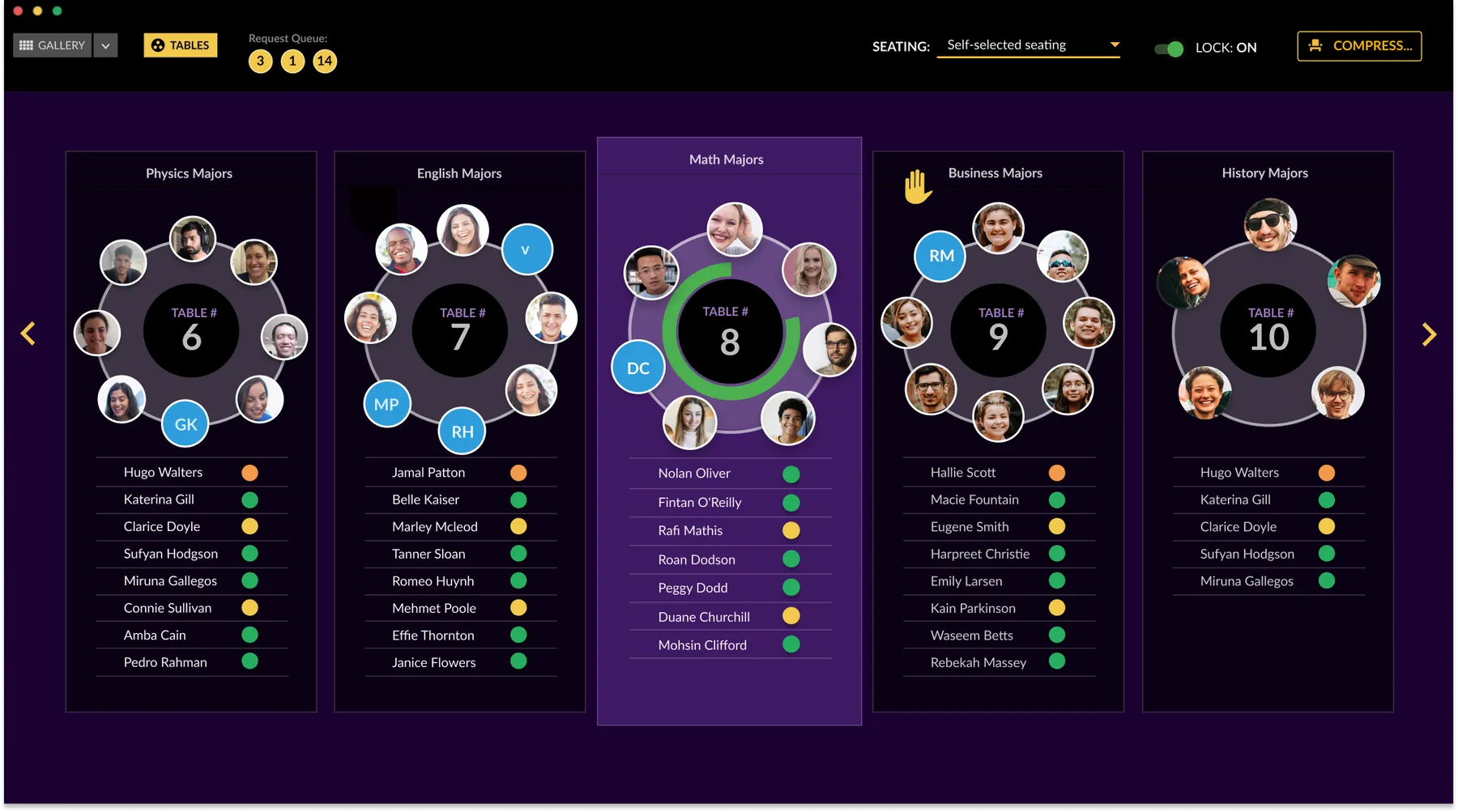
3 HyFlex lessons from the pandemic and what's next
As the coronavirus pandemic forced college classes online, the higher ed community was buzzing about an instructional model called HyFlex.
The concept wasn't new. In its truest form, HyFlex, sometimes called hybrid-flexible, calls for courses to be created in a way that gives students complete control over how and when to participate, either in-person or online. A small subset of schools was using this format before the pandemic. But the effect of the health crisis on instruction brought new attention to it, as more schools saw its potential to address the uncertainties affecting course delivery.
Many colleges that pursued the approach during the pandemic have come up short of full-on HyFlex, however, online learning experts say. That's in part because the crisis is limiting how much choice students have in how they participate in a HyFlex class.
Still, they say, institutions can learn from how HyFlex was used during this period, should they want to make it a bigger part of their offerings going forward.
Pure HyFlex isn't an easy win
Colleges can deliver HyFlex courses in at least two modes: in-person and online. The online piece can be synchronous or on-demand, and some schools provide it both ways.
Hyflex experts encourage colleges to keep a few principles in mind as they develop the courses: students should have a choice in how they participate, and they should have the tools and ability to access all course modes. It's also important that each mode offers an equivalent learning experience and includes many of the same course elements.
"If you consider (the principles) to be slider bars, none of them can be at zero" to call a course HyFlex, said Kevin Kelly, a higher education consultant and instructor at San Francisco State University. Still, Kelly added, "different flavors" of HyFlex emerge as campuses address their own limitations and considerations around offering the course model.
During the pandemic, for instance, restrictions on in-person gatherings — or students' and faculty members' varied willingness to engage face-to-face — could hamper a school's ability to offer the in-person component of a HyFlex course.
Others include whether faculty members have enough pedagogical knowledge or instructional design support to produce a HyFlex class that fulfills the required learning outcomes and offers the same level of learning across modes.
Whether schools have the technology to provide students with a real-time online experience and whether learners have the internet bandwidth to access classes off campus are also concerns, though experts say they generally can be designed around while sticking to HyFlex principles.
Asynchronous online options are key
Before the pandemic, faculty using HyFlex tended to build an online, asynchronous version of the course and used that to teach in the classroom, sometimes adding synchronous online instruction, said Brian Beatty, a HyFlex pioneer who is credited with laying out its core principles.
But instructors and schools shifting classes online due to the pandemic have gravitated to synchronous online instruction, said Beatty, who is also a professor at San Francisco State. That's at least in part because it's not as labor-intensive as a fully asynchronous online course.
"It's an easier approach to HyFlex in the minds of many," Beatty said.
Beatty urges colleges considering HyFlex for the long haul to invest in the asynchronous online component, saying it gives them more flexibility to serve students and prepare for situations in which synchronous instruction isn't possible.
David Rhoads, director of teaching excellence and digital pedagogy at Vanguard University, in California, recommends colleges start with an asynchronous online course based on the learning objectives and add the in-person experience, which would be mostly activities-based. This structure, he said, ensures all modes offer an equivalent learning experience
MSU Billings was piloting the HyFlex model before the pandemic as a way to give its largely nontraditional student body more options while streamlining course offerings.
"We were limping along trying to offer two sections of all these classes," said Joy Honea, a professor and president of the school's faculty association. "And what would happen is the online (section) would fill up immediately and have a huge waiting list, and then the face-to-face section would maybe have eight or 10 people in it."
The university plans to expand its use of HyFlex as more faculty are trained to teach that way.
Already, online courses at MSU Billings must be asynchronous, and the school expects it will require HyFlex courses to include that mode, Honea said.
"There's not going to be a one-size-fits-all modality, at least for our student body," Honea said. "We're going to need to have a mix, and HyFlex is a model that allows you to mix several things."
Faculty need support
Instructors at MSU Billings must participate in course design training before they can teach a HyFlex class, which Beatty delivers and for which they get a $1,000 stipend. They can receive $2,000 to develop and teach their first HyFlex course, which is reviewed by a team of instructional designers. However, Honea notes, they can forgo the payment if they are concerned about their intellectual property rights to the course they develop.
As colleges moved classes online in spring 2020, many turned faculty development into overdrive, striving to help instructors understand at least the basics of remote teaching. Although many MSU Billings faculty have been experimenting with elements of HyFlex on their own, the institution wants a "much more systematic rollout" to ensure what they are doing is of quality and "that it's actually HyFlex," Honea said.
About four dozen MSU Billings professors completed HyFlex training as of winter 2020 — more than a third of its full-time faculty. The school used $51,000 from the first round of federal coronavirus relief money to fund the stipends, though Honea said administrators pledged financial support for such training before the pandemic.
"There's not going to be a one-size-fits-all modality, at least for our student body."

Joy Honea
Professor and faculty association president, Montana State University Billings
Training early adopters to teach HyFlex classes could pay dividends. "With a small amount of faculty development and a little bit of support — some time or some money, right — they're willing to invest a lot more into this," Beatty said. "Once they've got that success, then it's easier for the institution and for other faculty to kind of piggyback on that expense or on that success."
That's the plan at MSU Billings. Honea said the university is developing a system through which faculty members with ample HyFlex experience review proposed courses that use the model.
HyFlex advocates acknowledge that switching to the model creates more work for faculty, though they say most of that is in building the class.
"It's a paradigm shift," Rhoads said. "It's like two big huge things having to happen at the same time. ... They're flipping the classroom and seeing their lecture time not as lecture anymore but as active engagement."
Administrators, in turn, need to provide support, including money for training, Rhoads said. "They can't just say, 'Let's flip this school to HyFlex,' and give them a semester. They're going to have to have a strategic plan that includes HyFlex," he said.
What's next for HyFlex?
Several colleges have shared their experiences using HyFlex during the pandemic. But Erin Lynch, associate provost of scholarship, research and innovation at Winston-Salem State University, in North Carolina, sees an opportunity to figure out what are the core elements needed to make the model work.
She and a research team plan to examine its implementation across a small group of minority-serving institutions, primarily historically Black colleges, that represent a mix of public and private, and research and non-research, schools. Winston-Salem State is one of them.
"We need to disseminate that information now so that people can use the model and the components ... that we know are the defining factors for HyFlex," she said. "That way you don't have everybody doing their own version of something and thereby decreasing the actual validity of the model and its efficacy."
The pandemic has disproportionately impacted low-income households and Black and other people of color, raising concerns about diminished educational access for those groups. The majority of students at HBCUs receive the Pell Grant, which is given to students with the greatest financial need. Meanwhile, HBCUs are important drivers of college degree attainment for Black students, particularly in STEM fields.
"If we don't get this right, what does that mean for our students going out into the workforce? What does that mean for our national economy if our institutions," particularly MSIs and HBCUs, " ... have a dip or a lull in achievement because HyFlex was not done right," Lynch said.
Beatty thinks offering multiple modes of instruction, including an asynchronous online option, can help schools address equity concerns by enabling them to serve more students. Whether that happens comes down to implementation.
"There are issues of equity in every single one of those areas," Beatty said of the HyFlex modes. "And so the question is, well, what are the equity issues and do the alternative ... paths actually help solve those equity concerns ... or do they exacerbate the problems?"







